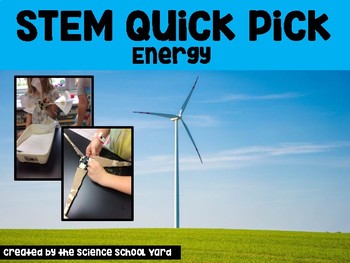As we move toward summer break...which mind you we all sure could use...I wanted to keep connected with my students over the summer. I found some great ideas online and I am ready to help you make yourself flat and go on adventures with your students, too! Here is how to do it...
You might be seeing the Flat Teacher posts all over. This idea originated with the book Adventures of Flat Stanley, if you haven't see it...it is about a boy who gets flattened and goes on adventures all over the world! I am giving it a little twist for my own students, many who never get to go too many places. I want them to share their Science and STEM adventures threw posting videos and pictures on our flipgrid Classroom!
6 Easy Steps:
1. Before you do anything, you need to make yourself flat! How to do that? Download the bitmoji app from the App store.
2, Now, head on over to your computer and get the chrome extension: Bitmoji Extension for Chrome
3. At this point you can edit and create your very own Flat Teacher! This is the fun part! For just the right pose such as your full body, search Pose, don't be too specific. Watch out for the space bar...don't do it. I used the words: wave, look, point, jump, run and walk for bitmojis that were without other images. I then right clicked and saved the image to my desktop to insert.
4. I first download my bitmoji You can also save as a png which will make your background transparent. I copy and paste 6 bitmojis on one page to print and cut out. All I did was right clip and save my pictures to my desktop.
5. I printed mine on cardstock so they were stronger. Didn't have time to laminate because time was valuable...(four hours and out).
6. I used flipgrid for my virtual learning and WOW what a great free program on your computer with use with microsoft and google! I will have all of my students post their pictures or videos within our summer science spot within flipgrid!
If you are using flipgrid you will need to create a new banner. The dimensions are: 1500px x 500 px.
Want to download my science letter? Here you go...Free Bitmoji Summer Science Letter, even if you want to use the idea, you can print, sign and attach your bitmoji!
Have fun connecting this summer with this fun and easy activity that I can't wait to see the response. Flipgrid has allowed so many of my students to have their voice! Let's make Science and STEM child's play...together!
Renee
0
You might be seeing the Flat Teacher posts all over. This idea originated with the book Adventures of Flat Stanley, if you haven't see it...it is about a boy who gets flattened and goes on adventures all over the world! I am giving it a little twist for my own students, many who never get to go too many places. I want them to share their Science and STEM adventures threw posting videos and pictures on our flipgrid Classroom!
Let's Go On A Flat Teacher Adventure!
6 Easy Steps:
1. Before you do anything, you need to make yourself flat! How to do that? Download the bitmoji app from the App store.
2, Now, head on over to your computer and get the chrome extension: Bitmoji Extension for Chrome
3. At this point you can edit and create your very own Flat Teacher! This is the fun part! For just the right pose such as your full body, search Pose, don't be too specific. Watch out for the space bar...don't do it. I used the words: wave, look, point, jump, run and walk for bitmojis that were without other images. I then right clicked and saved the image to my desktop to insert.
4. I first download my bitmoji You can also save as a png which will make your background transparent. I copy and paste 6 bitmojis on one page to print and cut out. All I did was right clip and save my pictures to my desktop.
5. I printed mine on cardstock so they were stronger. Didn't have time to laminate because time was valuable...(four hours and out).
6. I used flipgrid for my virtual learning and WOW what a great free program on your computer with use with microsoft and google! I will have all of my students post their pictures or videos within our summer science spot within flipgrid!
If you are using flipgrid you will need to create a new banner. The dimensions are: 1500px x 500 px.
Want to download my science letter? Here you go...Free Bitmoji Summer Science Letter, even if you want to use the idea, you can print, sign and attach your bitmoji!
Have fun connecting this summer with this fun and easy activity that I can't wait to see the response. Flipgrid has allowed so many of my students to have their voice! Let's make Science and STEM child's play...together!
Renee





















































